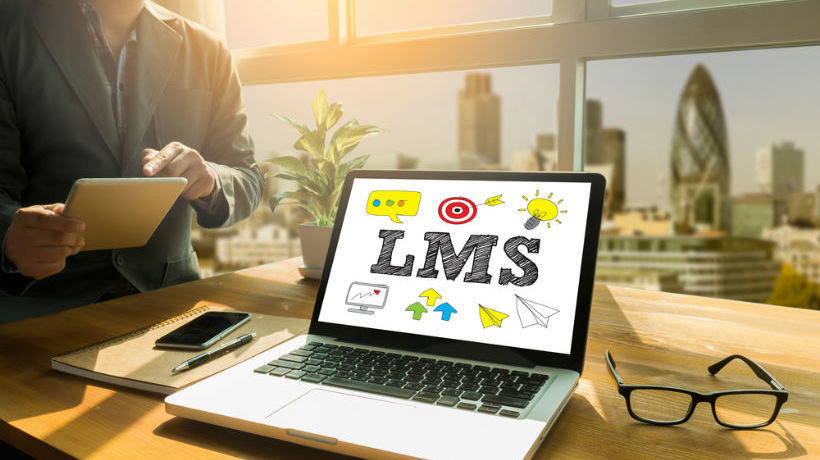What Should Your LMS Measure? 6 LMS Metrics For eLearning Professionals
One of the biggest advantages of using a Learning Management System is being able to gain insight into learning behaviors. It also allows you to evaluate your eLearning course design and overall eLearning strategy so that you can pinpoint areas for improvement. However, different LMS platforms offer different reporting features. As such, you have to find the one that targets the Big Data you need to make your eLearning effective. Here are the 6 top LMS metrics that you should look for in your next LMS platform.
1. eLearning Course Progress Or Completion
Without a doubt, your LMS must be able to track completion rates and learning progress. This helps you determine how your online learners are performing, the time they need to complete each eLearning lesson, and their level of comprehension. For example, it's safe to say that online learners are NOT absorbing the information if they cannot pass the final online assessment. Likewise, online learners who breeze through the eLearning course may not find it challenging enough, which can lead to boredom. It's not simply a matter of pass or fail. eLearning course completion LMS metrics give you the opportunity to identify issues in your eLearning course design and monitor learning behaviors.
2. Online Learner Proficiency
Regardless of your learning objectives, the ultimate goal is to increase proficiency and competency. When all is said and done, you need your online learners to be able to perform an online task, use their skills and remember the key facts and stats. To achieve this, you need a LMS that measures their knowledge base before and after the eLearning experience. This typically comes in the form of eLearning assessments, such as multiple choice exams and eLearning interactive simulations. However, the LMS should take it a step further by analyzing every aspect of the online assessment results. For example, how long it took to complete the eLearning assessment and whether online learners have improved since the last online test.
It's wise to conduct proficiency "spot checks" from time to time, instead of waiting until the very end. After each eLearning assessment, evaluate the findings and identify areas for improvement that are still causing issues. This gives you the opportunity to provide supplemental resources to improve performance before it's too late.
3. eLearning Course Evaluation Ratings
We've all been there. We think that everything is going swimmingly until the LMS reports and analytics put a wrench into the works. In most cases, this is due to the fact that we are so close to our eLearning content. We've worked hard to create effective eLearning materials. So, naturally, we have a certain attachment. However, it's important to step back from the eLearning course design and to look at it with fresh eyes. More specifically, through the vantage point of a LMS platform.
One of the most valuable LMS metrics is eLearning course evaluation ratings. How do your online learners really feel about the eLearning course? Do they think anything needs to be changed? Would they recommend it to a friend or coworker? You can find the answers to these vital questions by conducting a survey or poll. The LMS can then gather all of the Big Data in one place. In other words, they can function like a database management system. Some even create charts, graphs, and tables to make the data easier to digest.
4. eLearning ROI
No Learning Management System is truly free, even the free options that don't charge any upfront fees. As they say "time is money", and you need to invest time into monitoring and maintaining the LMS platform. Not to mention, developing and deploying all of your eLearning content. Thus, your LMS metrics need to show the costs versus the benefits. In other words, is your eLearning program really worth the investment? Or do you need to rethink your eLearning strategy? Most LMS systems don't have a metric for this. But there is a roundabout way of calculating eLearning ROI.
Firstly, you need to analyze the performance of your audience, sales figures, and customer service ratings to determine if there is any improvement. Match your findings to the LMS metrics that are available, such as elearning assessment results and online learner performance. For example, an increase in customer satisfaction may be attributed to high eLearning course completion rates.
5. Instructor Or Manager Ratings
Online learners might love your eLearning course design. But how do they feel about the instructors and facilitators? Managers, trainers, and supervisors would be the equivalent for corporate eLearning courses. These individuals play a crucial role in the eLearning process. They are there to guide online learners and offer them continual support. Thus, they must take their role seriously and be actively involved in the eLearning community. One of the most effective tools to measure instructor or manager ratings is anonymous online surveys and questionnaires. This gives them the power to voice their opinions without fear of reprisals.
6. Custom LMS Metrics Criteria
This is a broad category that depends on your organization's needs. Many LMS platforms now feature customized LMS metrics criteria. This enables you to generate reports and charts that align with specific goals and objectives. As such, you can make the most of your online resources by allocating them correctly. For example, measuring the effectiveness of a serious game to see if it's suitable for a localized eLearning course. If they don't offer personalized LMS metrics, then you may want to request custom analytics or reports or look for another LMS provider.
Ultimately, you need a LMS that can offer the best return on your investment. One of the most effective ways to find it is by analyzing the reporting capabilities. This gives you the power to get the most value for your money while gathering key performance data. So, keep these LMS metrics in mind when you’re looking for your next Learning Management System.
Are you searching for a mobile-friendly LMS for your eLearning course? Read the article 5 Things To Consider When Choosing A Responsive Design LMS to discover 5 things that can help you choose the best responsive LMS for your mobile learning development needs.









